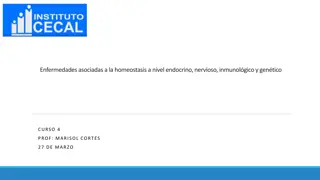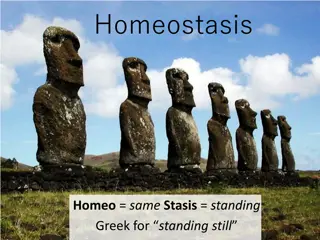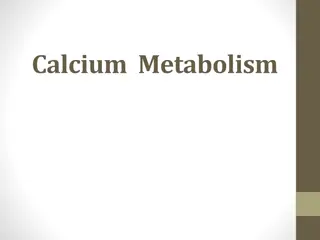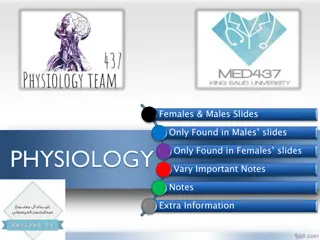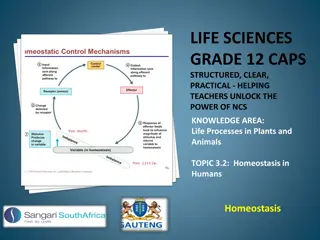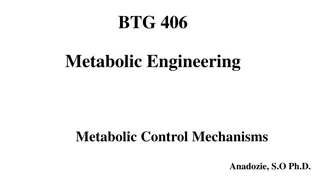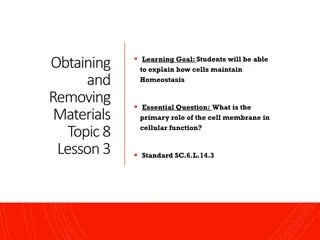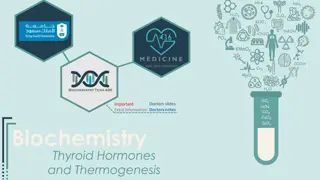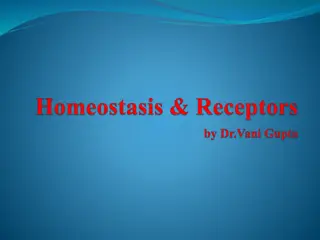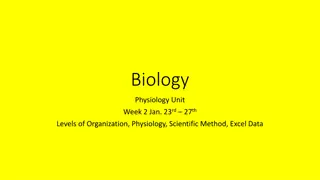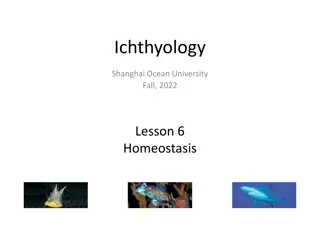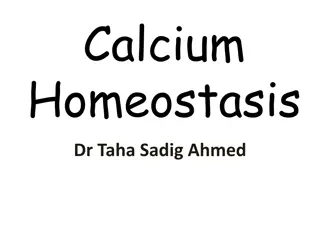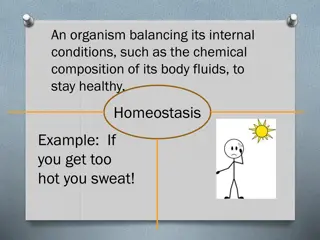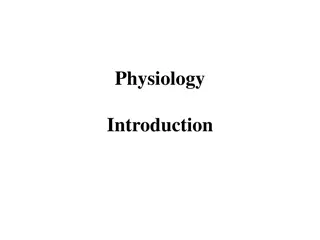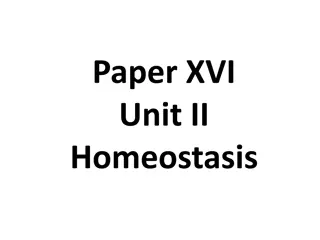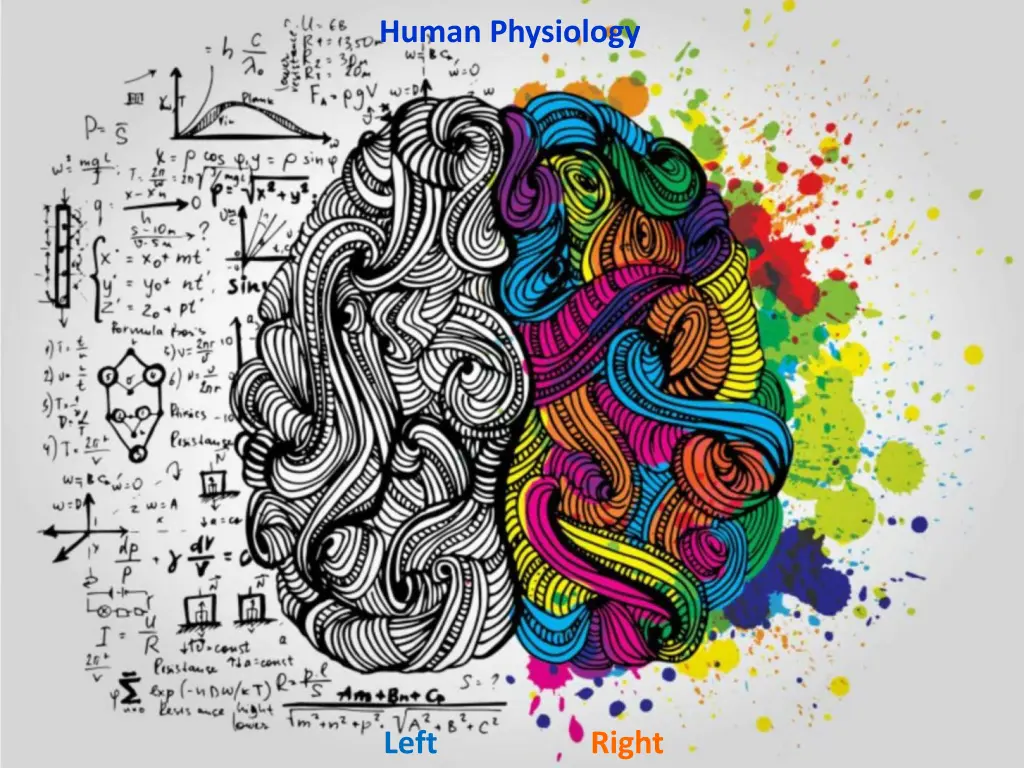
Understanding Human Physiology
Explore the intricacies of human physiology, from the etymology of key terms to levels of organization and the concept of homeostasis. Delve into the comparison of function and process in physiology, shedding light on analytical, creative, logical, and imaginative aspects. Discover the interplay of different physiological variables in circadian rhythms and the essential values of a metabolic blood panel. Uncover the fascinating world of human physiology through detailed imagery and insightful explanations.
Download Presentation

Please find below an Image/Link to download the presentation.
The content on the website is provided AS IS for your information and personal use only. It may not be sold, licensed, or shared on other websites without obtaining consent from the author. If you encounter any issues during the download, it is possible that the publisher has removed the file from their server.
You are allowed to download the files provided on this website for personal or commercial use, subject to the condition that they are used lawfully. All files are the property of their respective owners.
The content on the website is provided AS IS for your information and personal use only. It may not be sold, licensed, or shared on other websites without obtaining consent from the author.
E N D
Presentation Transcript
Human Physiology Left Right
Analytical Creative Logical Imaginative Precise General Repetitive Intuitive Organized Conceptual Detailed Holistic Belief Heuristic Sequential Irregular Literal Figurative Detached Empathetic Verbal Non-Verbal
Etymology (word origin; derivation of words): Physiology From 1560 s, French and directly from Latin physiologia. Study and description of natural objects, natural philosophy". Derived from physios = "nature, natural, physical"; and logia = "study". This gives the meaning of "science of the normal function of living things". Anatomy From Late 1300 s, Latin anatomia, Greek anatome. Study or knowledge of the structure and function of the human body . Derived from ana = "up"; and tomos (or temnein) = "to cut". Together this gives "a cutting up" involving dissection.
Compare Function and Process in terms of Physiology Functional Questions: Purpose of event? Process Questions: How is event achieved? Why does blood flow? Why do RBCs transport O2? Why do we breathe? How does blood flow? How do RBCs transport O2? How do we breathe? Integration of both to get the holistic picture!
Levels of Organization: Atoms . Cells (starting point for Physiology) The Systems that make up the Body in Human Physiology
Homeostasis Typical values of a Metabolic Blood Panel Parameter Blood Levels 295-310 mOsM Osmolarity pH 7.35-7.45 Arterial blood gas PCO2 35-46 mmHg Arterial blood gas PO2 80-100 mmHg Hematocrit (HCT) 42-52% Male 37-48% Female Blood Sugar Regulation Glucose (fasting) 70-100 mg/dL Glucose - 2 hrs post prandial 140 mg/dL Insulin (fasting) 5-25 mU/mL Glucagon 50-100 pg/mL Ions/Minerals Sodium (Na+) Potassium (K+) Calcium (Ca2+) Chloride (Cl-) Phosphorus (i) (PO43-) 135-145 mM 3-5 mM 1.8 mM 106 mM 3-4 mM
Lights on (daytime) Lights off Figure 1. Circadian rhythms of several physiological variables in a human subject with room lights on (clear bars) for 16 h and lights off (blue bars) for 8 h.
Homeostasis Stimulus = Deviation From Set Point o o Body Parameters Set point (range)
Homeostasis is maintained by Feedback Loops
3 5 4 1. Stimulus 2. Receptor 3. Afferent Pathway 4. Integration Center 5. Efferent Pathway 6. Effector Tissue 7. Response 2 6 1 7
THE CHEMISTRY OF PHYSIOLOGY - REVIEW Levels of Organization: atoms > molecules > organelles > cells > tissues > organs > organ systems > organism Valence e- > outer shell electrons = chemical properties of atom.
3 Types of Chemical Bonds Covalent bonds sharing of electrons between atoms; strong bonds. 1. a) Non-polar = equal sharing of e-s e.g. lipids a) Polar = non-equal sharing of e-s e.g. water 2. Ionic bonds complete transfer of electrons, relatively weak bond (though crystals are strong), break in water yielding ions (charged particles). Yielding Na+ and Cl- Na atom Cl atom 3. Hydrogen bonds weak but sig attractive forces between a H atom in one molecule and an O or an N atom in another molecule. Molecules: Inorganic molecules e.g. H2O. Organic molecules e.g. C6H12O6.
Properties of Water 1) Solvency - universal solvent. 2) Cohesion - surface tension and adhesion. 3) Thermostability - high heat capacity, high heat of vaporization. Define calorie. 4) Reactivity - Water participates in chemical reactions e.g. Hydrolysis and Dehydration Synthesis
Organic Molecules: Carbohydrates Monosaccharides simple sugars (monomers). 1. Glucose the molecule as a source of E in the human body. 2. Fructose a simple sugar found in fruits (fruit sugar). 3. Galactose a component of milk sugar. Disaccharides 2 monosaccharides joined by a glycosydic bond. 1. Sucrose (table sugar) = glucose + fructose 2. Lactose (milk sugar) = glucose + galactose 3. Maltose (grain sugar) = glucose + glucose Polysaccharides complex carbohydrates polymers of glucose. 1. Glycogen - E storage for glucose in animal cells, liver, skeletal mus. 2. Starch - E storage for glucose in plant cells, e.g., potatoes! 3. Cellulose structural component of plant cell walls, e.g., dietary fiber!
Lipids In general are non-polar molecules, not solvent in water. 1) Fatty Acids fatty acids and glycerol. 2) Triglycerides mono, di, tri ... 3) Phospholipids amphiphilic (polar and non-polar) 4) Steroids complex and important! Proteins Contains C, H, O, N, S. most versatile and complex Amino Acids (AA s) are the monomers of proteins. Levels of Structures of Proteins: Primary (1o) Secondary (2o) Tertiary (3o) Quaternary (4o)
THERMODYNAMICS - How Energy is converted to Work. 1st Law of Thermodynamics 2nd Law of Thermodynamics The Human Body: Food (PE) is used to move and operate (KE) the body. e.g., 100 Kcal of food is consumed, ~ 60 Kcal lost as heat, ~ 40 Kcal used for movement (chemical, transport and mechanical) of the body. i.e., Our bodies are ~ 40% efficient Efficiency changes
What is Energy? What is Work? 1) Chemical Work chemical bonds (invest, store, release E). 2) Transport Work movement across a gradient. 3) Mechanical Work - movement of a part or 'whole . Let s examine 2 forms of Energy: Kinetic Energy (KE) and Potential Energy (PE) KE and PE can be converted from one form to the other but it is never a 100% efficient conversion. Work (chemical, transport, mechanical) in body involves inter- conversion of these 2 forms of E.
Chemical Reaction in Body - to Store, Release, or Transfer E. Metabolism = Anabolism + Catabolism 1)Endergonic Reactions Require Energy (E) input e.g. A + B + E C Dehydration Synthesis: Anabolic Reactions synthesizing something, building a more complex, larger molecule from simpler, smaller molecules, require input of E. 2)Exergonic Reactions Release Energy (E) e.g. C A + B + E Hydrolysis: Catabolic Reactions they are breaking chemical bonds. Large molecules are broken down to produce smaller molecules, release E that can be used for physiological work.

